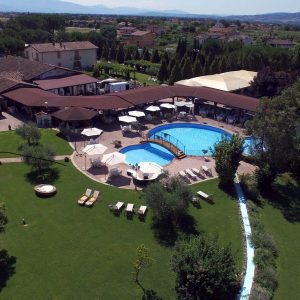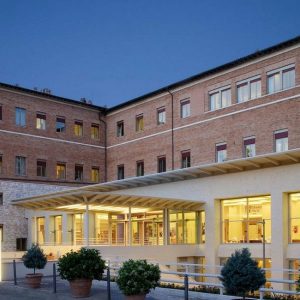▌ Discover Assisi
#BELLAUMBRIA
Assisi in Italy stretches out on the slopes of the Monte Subasio, above the plain where the Topino and Chiascio rivers flow. Although it can boast Roman origins, its present-day appearance, because of the buildings and also the urban structure, is surely due to the city’s development during the Middle Ages.
Assisi’s oldest nucleus, which is protected by a defensive apparatus made up of eight fortified entrance portals and a long belt of town walls, which are still perfectly preserved, is topped by two castles on peak of the mountain: the Major Castle, reconstructed by the Cardinal Albornoz in 1367 and the Minor Castle. Apart from religious buildings too important to not be considered solely the heritage of Assisi such as the Basilica of St. Francis, the tourist can also visit the Basilica of St. Clare and the Church of St. Peter.
The first was constructed in the Gothic style between 1257 and 1265, the second is a little older and decorated with an elegant middle portal with three rose-windows. The Cathedral, dedicated to the Patron Saint St. Rufino, vaunts a splendid and unaltered facade with sculptures and reliefs; the interior, however, has undergone much reconstruction during the centuries which have distorted the original project dating back to the 13th century. On the Town Square situated on the ancient Forum, you will find the Priors’ Palace (1337), the Palace of the People’s Captain (12thcentury) and the Temple of Minerva, built during the augustean period with pronaos, columms and corinthian capitals which are still intact.
Nearby, places which are connected with the life of St. Francis can be visited, sich as the Eremitage of the Prisons, immersed in a thick wood of oaks and ilex on the slopes of the Subasio Mountain, and the convent of St. Damian, which was built up around the oratory were, according to tradition, the Cross spoke to the Saint. Finally, in the plain, the impressive Basilica of Saint Mary of the Angels was built according to the plans of Alessi between 1569 and 1679 to protect the Porziuncola Chapel, which was the first simple meeting-place of the Francescan brotherhood.
All those who have the good luck of visiting this splendid town have to agree with who says that the beauty of town goes beyond a short, and necessarily incomplete list of works of art more or less extraordinary, but is however to be found in the atmosphere of places which the story and the faith of the Saint have rendered unique all over the world.



